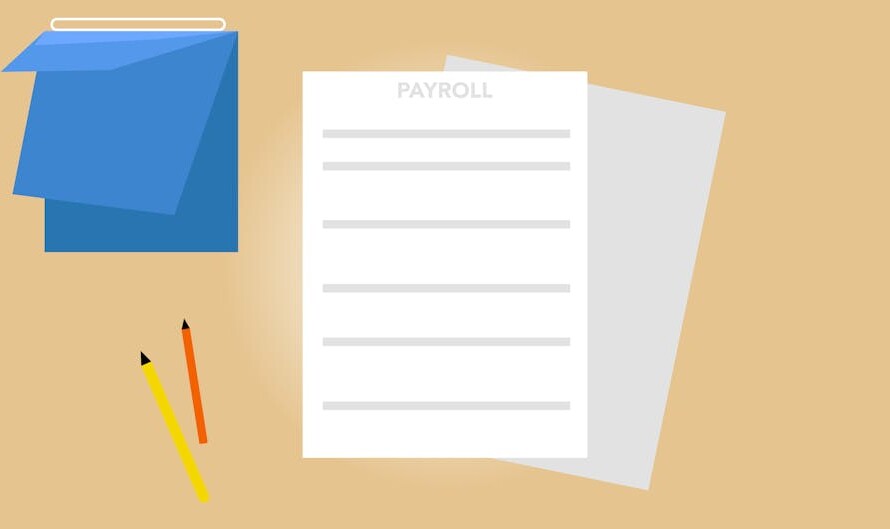Mastering Contingency Plans with AI: The Key to Strategic Business Resilience and Scaling
In the fast-paced world of business, uncertainty is a constant. While entrepreneurs often focus on growth and success, it is equally important to prepare for the unexpected. A contingency plan is a strategic blueprint that outlines the steps a business will take in response to unforeseen events or crises. This proactive approach is not about pessimism; it is about preparedness and resilience.
By planning for continuity, businesses can continue providing services to their customers, which is crucial for survival in competitive markets.
ANTICIPATING THREATS AND WEAKNESSES
A comprehensive contingency plan begins with a thorough risk assessment. Businesses must identify potential internal and external threats that could disrupt operations. These could range from natural disasters and technological failures to supply chain disruptions and key personnel departures. By recognizing these vulnerabilities ahead of time, companies can devise strategies to mitigate risks. For instance, data backup protocols can be established to protect against IT system crashes, or alternative suppliers can be sourced to ensure a continuous supply in case of a disruption.
RESPONDING EFFECTIVELY TO CRISIS
When a crisis strikes, time is of the essence. A well-crafted contingency plan serves as a roadmap for swift action. It outlines clear roles and responsibilities, ensuring that team members know exactly what to do and who to turn to. This organized response can significantly reduce downtime and financial losses. For instance, in the event of a product recall, a contingency plan would outline the procedures for customer communication, product retrieval, and replacement. This would help maintain customer trust and safeguard the brand’s reputation.
ENSURING BUSINESS CONTINUITY
The ultimate goal of a contingency plan is to ensure the continuity of business operations at an acceptable level during and after a crisis. This could involve making arrangements for remote work if the physical office space becomes inaccessible or having insurance coverage to manage financial losses. By planning for continuity, businesses can continue providing services to their customers, which is crucial for survival in competitive markets.
PROVIDING A COMPETITIVE EDGE
Companies with robust contingency plans are often better positioned to handle emergencies than those without. This level of preparedness can serve as a unique selling proposition, providing reassurance to clients and stakeholders about the stability and reliability of the business. In some cases, it can even lead to new opportunities, as a business capable of withstanding adversity may attract customers who value dependability.
Crafting Your Business’s Foolproof Contingency Strategy
IDENTIFY POTENTIAL RISKS
The first step in creating a robust contingency plan is to identify the potential risks that could impact your business. This involves a comprehensive analysis of both internal and external factors that could pose threats. Internally, consider aspects such as employee turnover, data breaches, or equipment failures. Externally, consider market fluctuations, supply chain disruptions, natural disasters, and regulatory changes. Engage team members from various departments to ensure a comprehensive risk assessment, as they can provide insights into challenges unique to their areas of expertise.
ASSESSING THE IMPACT OF RISKS
Once you have a list of potential risks, the next step is to assess their impact on business operations. Evaluate each risk based on the likelihood of occurrence and severity of its impact. This can be achieved by utilizing a risk matrix that helps prioritize risks by categorizing them based on high, medium, or low impact and likelihood. This assessment will help you focus your resources on the most significant threats to your business.
PRIORITIZE RISKS
After assessing the risks, prioritize them according to the criteria established in the previous step. High-impact, high-likelihood risks should be at the top of your list because they pose the greatest threat to your business. Medium risks should be addressed next, followed by low-priority risks. Prioritization ensures that you allocate time and resources effectively, focusing on preventing the most damaging events first.
DEVELOP STRATEGIES TO MANAGE RISKS
For each identified and prioritized risk, develop a strategy to manage it. This could include preventive measures to reduce the likelihood of the risk occurring or contingency measures to mitigate its impact. Strategies may involve creating backup plans, diversifying suppliers, investing in insurance, or implementing safety protocols. Ensure that each strategy is actionable, with clear steps and assigned responsibilities.
CREATE A RESPONSE PLAN
A well-defined response plan is crucial for managing any risk. This plan should outline the specific actions to be taken in the event of an incident, the timeline for response, and the individuals responsible for each action. It should also include communication plans both internally (for staff and stakeholders) and externally (for customers and the public).
ESTABLISHING MONITORING PROCESSES
To ensure that risks are continually identified and assessed, ongoing monitoring processes should be established. This could involve regular audits, performance reviews, and environmental scanning for new threats. Monitoring helps detect potential risks early and adjust your contingency plan accordingly.
REGULAR REVIEW AND UPDATE OF THE PLAN
A contingency plan is not a static document; it should evolve as your business and the external environment change. Schedule regular reviews of the plan—at least annually or after any significant business change or external event. During these reviews, update the risk assessments, strategies, and response plans to ensure they remain relevant and effective.

Success Stories: Contingency Plans in Action
Case Study: ZAPPOS’ Response to a Data Breach
In 2012, Zappos, an online shoe and clothing retailer, experienced a significant data breach that compromised the personal information of 24 million customers. Instead of panicking, Zappos swiftly implemented its contingency plan. They immediately informed customers of the breach, reset all customer passwords to prevent unauthorized access, and established a dedicated customer service team to handle inquiries. Zappos’ transparent and proactive response not only helped mitigate the damage but also maintained customer trust.
Real-Life Example: Starbucks’ Hurricane Preparedness
Starbucks has faced various potential disruptions due to hurricanes and other natural disasters. Contingency planning involves a comprehensive approach that includes employee safety protocols, store closures, and community support initiatives. By preparing in advance, Starbucks has been able to reopen stores quickly after a disaster. They sometimes provide free coffee to emergency workers and affected residents, reinforcing their community presence and commitment.
Case Study: Toyota’s Earthquake Recovery
Toyota’s experience with the 2011 earthquake and tsunami in Japan confirms the importance of contingency planning. The disaster disrupted supply chains globally, but Toyota’s robust contingency plan, which included a diversified supplier base and an efficient communication system, allowed the company to recover faster than its competitors. Toyota’s ability to resume production quickly minimized financial losses and showcased the resilience of its operations.
Real-Life Example: A Small Business Pivot During Covid-19 Pandemic
During the COVID-19 pandemic, many small businesses demonstrated remarkable adaptability. A notable example is a local restaurant that shifted from a dine-in to a takeout and delivery model. They also implemented online ordering and contactless payment systems. By doing so, they not only kept their business afloat but also expanded their customer base. Their contingency plan included leveraging social media for marketing and engaging with the community to understand their evolving needs.
Each of these examples illustrates the importance of having a well-thought-out contingency plan. Whether facing data breaches, natural disasters, supply chain disruptions, or global pandemics, businesses that prepare for the unexpected can navigate through crises with confidence. The key takeaways for entrepreneurs are clear: communicate effectively, diversify your strategies, be adaptable, and always prioritize the safety and needs of both employees and customers. These actions not only help mitigate immediate threats but also lead to long-term business resilience and success.
Takeaways and Action Items
For businesses in the AI business advisor field and beyond, mastering contingency planning is not just about crisis management; it’s about ensuring operational resilience, customer trust, and long-term success. Regular assessments, plan updates, and training are essential steps in this process, helping businesses navigate uncertainties with confidence.
By weaving in these keywords thoughtfully, your blog not only becomes more relevant to your targeted keyword clusters but also enhances its potential to rank higher in search engine results, driving more targeted traffic to your site.
| ✳️ Assemble a Risk Assessment Team ✳️ Identify and Categorize Risks ✳️ Analyze Risks and Determine Impact ✳️ Document the Risk Assessment and Plan Next Steps | |
| ✳️ Identify and Prioritize Risks ✳️ Develop Contingency Plans for Each Risk ✳️ Document and Communicate the Plans ✳️ Review, Test, and Update the Plans | |
| ✳️ Develop the Communication Strategy Framework ✳️ Create Template Messages and Communication Plans for Each Scenario ✳️ Train Communication Teams and Spokespersons ✳️ Test the Communication Strategy with a Drill | |
| ✳️ Develop Training Materials and Resources ✳️ Schedule and Plan Training Sessions ✳️ Conduct Training Sessions ✳️ Evaluate and Follow-Up | |
| ✳️ Schedule the Annual Review ✳️ Collect Data and Feedback ✳️ Conduct the Review Meeting ✳️ Update and Communicate the Contingency Plans |
FAQ
Get your FREE 8 Gears Assessment Score in 10 minutes!


